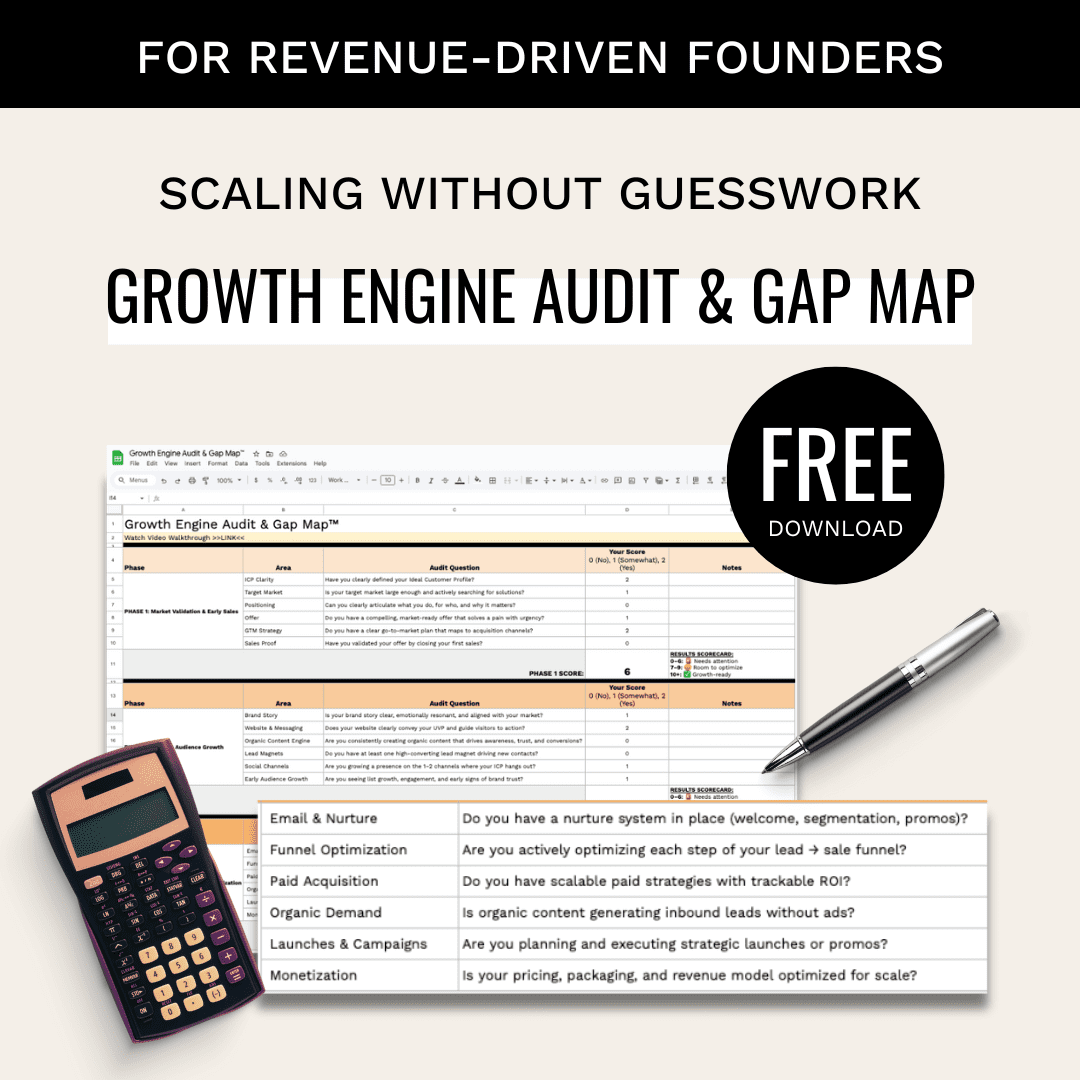Vibe Marketing blends emotional storytelling with data insights to create deeper connections in B2B tech marketing. It works because even logical decision-makers are influenced by emotions. Companies like Nutanix and OffSec have seen real results – like increased lead generation and higher ROI – by focusing on emotional engagement alongside analytics.
Key Takeaways:
- What It Is: Combines emotional storytelling with data-driven strategies.
- Why It Works: 65% of executives rely on non-quantifiable factors when making decisions.
- Proven Results: Examples include Nutanix improving conversion rates and OffSec generating 35 quality meetings with a 50% ROI.
- How to Start:
- Use AI tools for sentiment analysis and content personalization.
- Focus on customer emotions and real problems.
- Track performance metrics like engagement rates and conversions.
To succeed, balance data with human creativity, align your message with audience needs, and measure results to refine your approach.
Main Components
Building Customer Connections
To truly understand customer emotions, businesses need to blend data analysis with a human touch. Cox Communications is a prime example, using customer feedback to shape targeted campaigns and services. Their real-time decision engines track customer sentiment, helping them maintain strong retention rates by addressing concerns as they arise.
NASCAR demonstrates how this approach can work on a larger scale. Through their Official NASCAR Fan Council, they collect insights from 12,000 dedicated viewers. Additionally, their partnership with Hewlett-Packard led to the creation of a social media command center that tracks fan sentiment, enhancing viewer engagement and boosting sponsor appeal.
These insights lay the foundation for AI-driven strategies that can fine-tune how companies connect with their audiences.
Using AI Tools
Many leading companies are turning to AI to enhance their operations. Here’s how:
| AI Application | Purpose | Business Impact |
|---|---|---|
| Sentiment Analysis | Gauge customer reactions across channels | Optimize campaigns in real time |
| Content Personalization | Craft messages that resonate emotionally | Boost engagement rates |
| Feedback Analysis | Process input from various sources | Improve product development |
| Campaign Automation | Fine-tune timing and delivery | Increase operational efficiency |
AI can be particularly effective in tackling areas where efficiency is lacking. In fact, 41% of organizations report challenges in this area. By using AI insights, businesses can ensure their messaging aligns closely with customer expectations, making their efforts more impactful.
Message and Audience Alignment
Sungevity, a solar panel provider based in Oakland, offers a great example of how to align messaging with audience needs. They guide customers through the entire journey by:
- Analyzing the solar potential of individual properties
- Providing personalized energy savings estimates
- Connecting customers with knowledgeable representatives
- Ensuring clear communication throughout the installation process
"As a marketer, you understand the impact of B2B marketing. This approach proves highly effective and encourages creativity – essential for tech firms."
– ViB Editorial
Content syndication can also play a huge role in driving results, increasing lead generation by 42%. By regularly analyzing customer feedback and staying aware of market trends, businesses can keep their messaging relevant and emotionally engaging for their target audiences.
Implementation Guide
Required Tools and Software
Modern vibe marketing is all about combining cutting-edge AI tools with tried-and-true platforms. Here’s a breakdown of the essential tools you’ll need:
| Tool Category | Core Features | Recommended Use Cases |
|---|---|---|
| AI Analysis Platform | Sentiment tracking, trend detection | Analyzing customer feedback, real-time responses |
| CRM System | Contact management, interaction tracking | Building relationships, personalizing campaigns |
| Marketing Automation | Workflow automation, campaign scheduling | Distributing content, monitoring engagement |
| Content Generation AI | Natural language processing, creative assistance | Crafting personalized messages, scaling content production |
Once you have these tools in place, the next step is creating campaigns that resonate with your audience.
Creating Customer-Focused Campaigns
Successful vibe marketing is a mix of AI-driven insights and human creativity. A great example is Coca-Cola’s Create Real Magic campaign. By using DALL-E 2 to inspire AI-generated artwork from fans, the campaign saw over 120,000 submissions and racked up 7 million social impressions.
Here’s how to build campaigns that connect with your audience:
- Evaluate Your Toolset
Take stock of your current tools and identify areas where automation can help maintain consistent messaging. - Define Your Brand’s Unique Vibe
Use customer sentiment analysis to fine-tune your brand voice, ensuring it feels genuine and relatable. - Build Automated Workflows
Create no-code automation systems that reflect your brand’s personality while keeping a human touch.
"I see something, I say something, I run something, I paste something – and it usually works." – Andrej Karpathy
Once your campaigns are live, it’s time to measure their impact and make adjustments.
Measuring and Improving Results
Tracking performance metrics is key to refining your vibe marketing strategy. Keep an eye on these indicators:
| Metric | Target Range | Action Items |
|---|---|---|
| Impression Rate | Varies by channel | Adjust targeting and tweak creative assets |
| Engagement Time | 30% increase | Enhance content relevance and quality |
| CPM (Cost per 1,000 impressions) | $15–35 | Fine-tune ad placements and balance cost with reach |
For instance, Spotify’s AI DJ feature drove 40% weekly user engagement and extended session times by 30% through personalized content delivery. Likewise, Heinz’s A.I. Ketchup campaign notched 15 million organic impressions and boosted sales by 15%, proving how AI can deliver tangible results when used creatively.
Success Stories
AI Company Results
B2B tech companies have seen impressive outcomes by embracing vibe marketing, which prioritizes emotional connections. Take Nutanix, for example – they revamped their email marketing strategy with personalized outreach. The result? Competitive cost-per-MQL metrics, high MQL-to-SAL conversion rates, and a significant boost in pipeline growth.
What made their approach so effective? Nutanix combined data-driven insights with messaging that directly addressed customer problems, rather than just listing product features. This shift helped their campaigns strike a chord with their audience, showing the power of focusing on real-world solutions.
Other industries, like SaaS, have also tapped into vibe marketing to fuel their growth.
SaaS Growth Methods
OffSec provides a great example of how SaaS companies can use vibe marketing to generate qualified leads. Their multi-channel strategy was particularly impactful, as shown below:
| Channel | Key Metrics |
|---|---|
| Webinar Marketing | Boosted attendance rates |
| Targeted Appointments | 35 meetings secured, leading to 10 sales opportunities |
| Email Campaigns | Delivered a 50% ROI on investment |
The quality of leads generated through these efforts stood out, with the sales team highlighting their relevance and potential. This case demonstrates how aligning marketing strategies with authentic customer insights can lead to meaningful results.
Key Success Factors
Several critical factors contribute to the success of vibe marketing efforts:
| Success Factor | Implementation Strategy | Impact Metric |
|---|---|---|
| Content Syndication | Distributing content strategically | Broader reach and higher engagement |
| Trust Building | Focusing on solving real problems | Builds credibility, as 96% of customers distrust ads |
| Resource Optimization | Streamlining operations | Addresses challenges faced by 41% of organizations with limited resources |
"Marketing for High-Tech Companies is boring? Wrong! It is an essential part of your company’s success." – Stephan Wenger, Strategy, B2B Marketing World
The most effective strategies stand out by:
- Highlighting unique value propositions while staying genuine
- Fostering long-term relationships instead of chasing quick wins
- Partnering with others to amplify communication efforts
On the flip side, common missteps include overemphasizing product features instead of focusing on value and solutions, as well as overlooking cultural nuances when targeting global audiences.
These insights underline the strength of vibe marketing in blending data with authentic, customer-focused engagement.
sbb-itb-e8c8399
Conclusion
Main Points
Throughout this article, we’ve seen how Vibe Marketing combines emotional resonance with data-driven precision to fuel business growth. By merging emotional intelligence with the accuracy of AI, it reshapes B2B tech strategies, cutting down on wasted budgets – 74% of which stem from disconnected campaigns – and delivering impressive results like a 748% ROI through targeted SEO efforts.
Here’s a quick recap of the key elements driving success:
| Component | Impact | Benefit |
|---|---|---|
| AI Integration | Real-time analysis | 38% higher engagement |
| Data-Driven Decisions | Streamlined development | 22% faster execution |
| Content Syndication | Lead generation | Broader audience reach |
These factors form a solid foundation for businesses looking to take immediate, actionable steps.
Getting Started
- Define Your Brand’s Emotional Core
Pinpoint the emotions that resonate with your audience by using AI sentiment analysis tools like MonkeyLearn. These insights can help shape your messaging strategy. - Leverage AI for Precision
Utilize predictive analytics platforms to anticipate how your content will perform. For example, LumiBank boosted email open rates by 47% and improved customer retention by 33% in the first half of 2024 by applying such tools. - Measure and Refine
Keep a close eye on campaign performance using metrics such as:- Engagement rates
- Customer sentiment scores
- Conversion rates
- Revenue impact
Success with Vibe Marketing comes from blending AI-driven insights with authentic customer connections. Take TrailNest as an example: they cut ad spend by 28% while selling 60% of their inventory in just six weeks. This balance of technology and emotional appeal is the key to unlocking meaningful results.
Vibe Marketing Explained: Understanding AI’s Hottest Trend
FAQs
How can businesses combine emotional storytelling with data-driven strategies in Vibe Marketing?
To blend emotional storytelling with data-driven strategies in Vibe Marketing, the key is to make your data approachable and relatable. Break down complex figures into clear, impactful insights that connect with your audience on a personal level. Show the human side of the data to create a stronger emotional bond.
Let the data enhance your story rather than take center stage. A well-told narrative, supported by relevant data, not only builds trust but also keeps your audience engaged. The ultimate aim is to inspire action by weaving together facts and emotions in a way that reflects your brand’s values and meets your customers’ expectations.
What are some practical AI tools for Vibe Marketing, and how can they improve campaign success?
How AI Tools Elevate Vibe Marketing
AI tools are reshaping Vibe Marketing by making campaigns more efficient and impactful. Here’s how:
AI-powered platforms can test different campaign variations to quickly determine which ones strike a chord with your audience. This not only saves time but also reduces the resources spent on trial-and-error approaches.
These tools also excel at personalizing marketing efforts. By analyzing customer data, they craft messages and content that align with specific audience preferences. On top of that, AI can handle routine tasks like scheduling social media posts or tracking campaign performance, freeing up marketers to focus on the creative and strategic aspects of their work.
The result? Campaigns that feel more genuine and emotionally in tune with the audience, helping businesses form stronger connections with their customers.
How can businesses track the success of their Vibe Marketing campaigns and improve performance?
To gauge how well your Vibe Marketing campaigns are performing, start by setting clear key performance indicators (KPIs) that match your campaign’s objectives. Some commonly tracked metrics include engagement rates, conversion rates, customer sentiment, and growth in brand awareness. Tools like analytics platforms can help you monitor these metrics in real-time.
Take time to regularly analyze the data to spot trends and pinpoint areas that need improvement. If certain strategies aren’t connecting with your audience, tweak elements like your messaging, visuals, or emotional tone to better match their preferences. Experimenting with techniques like A/B testing can also provide insights to fine-tune your campaigns and improve their effectiveness over time.
Related Blog Posts
- 5 Ways AI Can Optimize Marketing ROI for your Tech Startup
- 5 Best Practices for B2B Marketing Automation Success
- Vibe Marketing: What It is and Why You Need to Get Started Now
- Vibe Marketers: What They Do and Why This Needs to Be Your Next Hire




